PORCHETTA DI TESTA (PIG’S HEAD ROULADE)
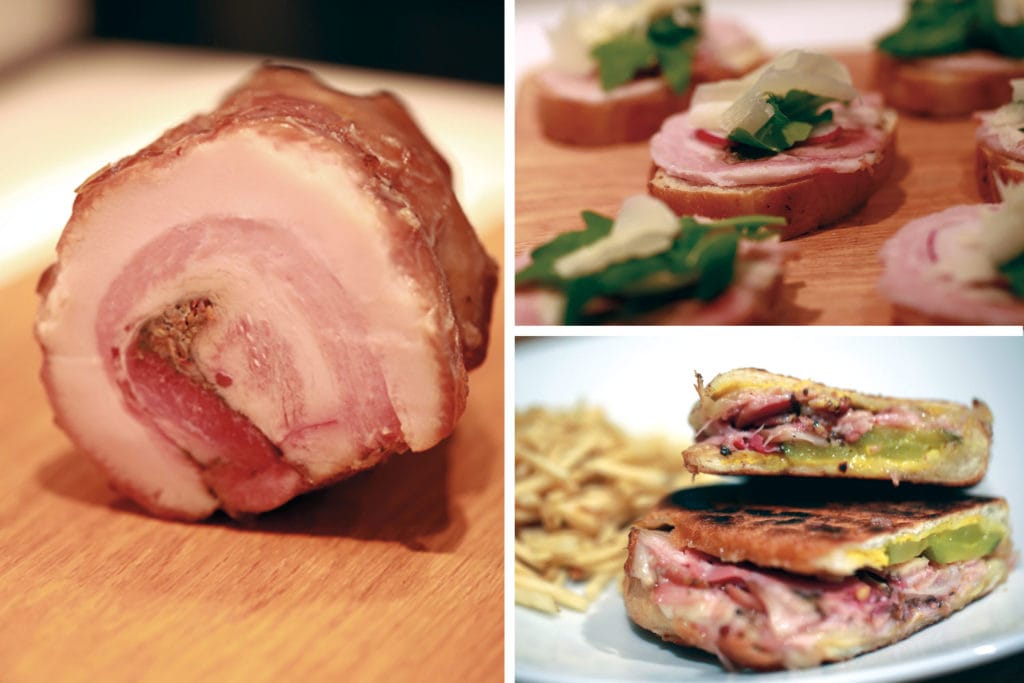
Adapted from West Coast Prime Meats Cooks © 2015
This di testa recipe is impressive and unique as the finished product looks like a reconstructed head of a pig, but it is a roulade that is marinated for 2 days and cooked sous vide for 16 hours. The cooked head has a soft yet rich and unctuous flavor that works for many applications. If you are not confident with your knife skills, find a local butcher who can process the pig’s head for you. Then you are left with the sous vide cooking and a delicious piece of charcuterie when you are finished.
Ingredients
- One whole pig’s head intact (approximately 12 to 20 pounds)
- Two tablespoons pink curing salt*
- One tablespoon kosher salt
- One tablespoon fresh ground black peppercorn
- Two tablespoons chopped fresh rosemary
- Three tablespoons chopped garlic
- One tablespoon lemon zest
- Half-tablespoon fennel seeds
- Half-tablespoon chile flakes
* This ingredient should not be ingested raw. Plase keep away from young children.
Tools
- Blow torch
- Sharp boning knife
- Shallow stainless or other nonreactive steel pan large enough to hold the meat
- Immersion cooking chamber
- Vacuum bag sealer
- Sous vide bag
Instructions
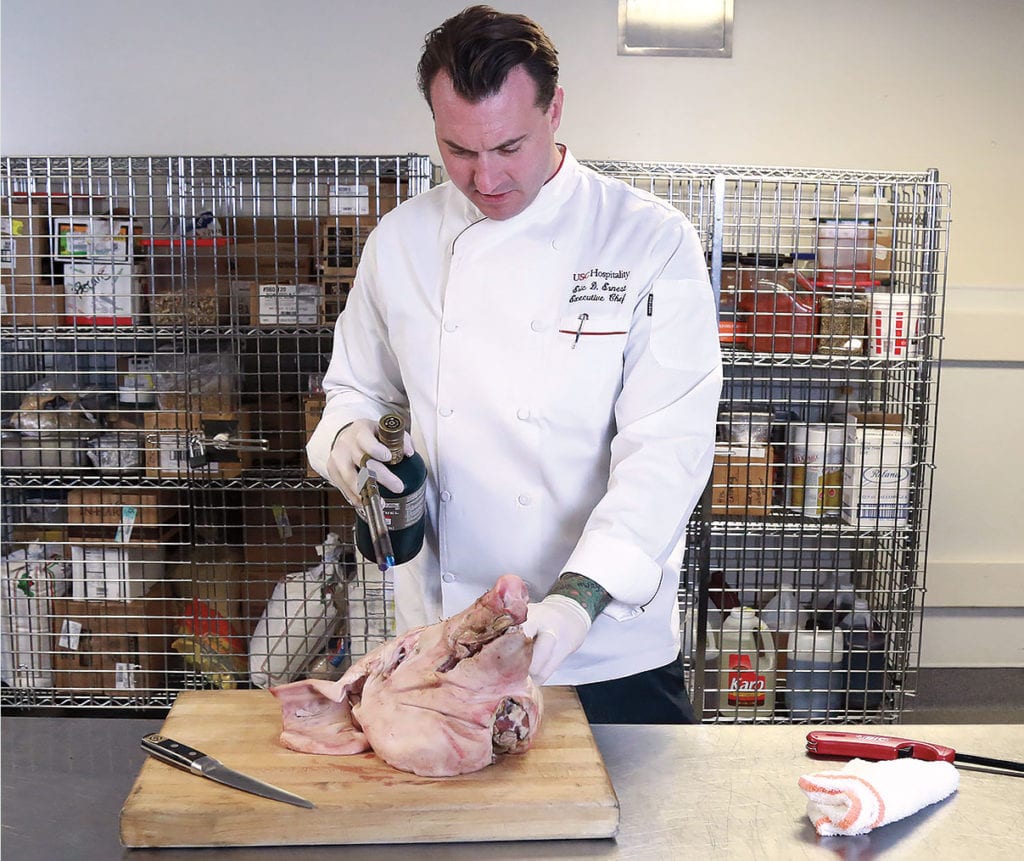
1
Blow torch the entire head to remove hair and wipe clean with a damp cloth.

2
Turn the head over and score the skin, making a clean incision from the neck to the end of the head.

3
Pull back the skin on the left side and make small shallow cuts separating the skin from the bone. The trick here is to keep the entire skin of the head intact, including the ears.
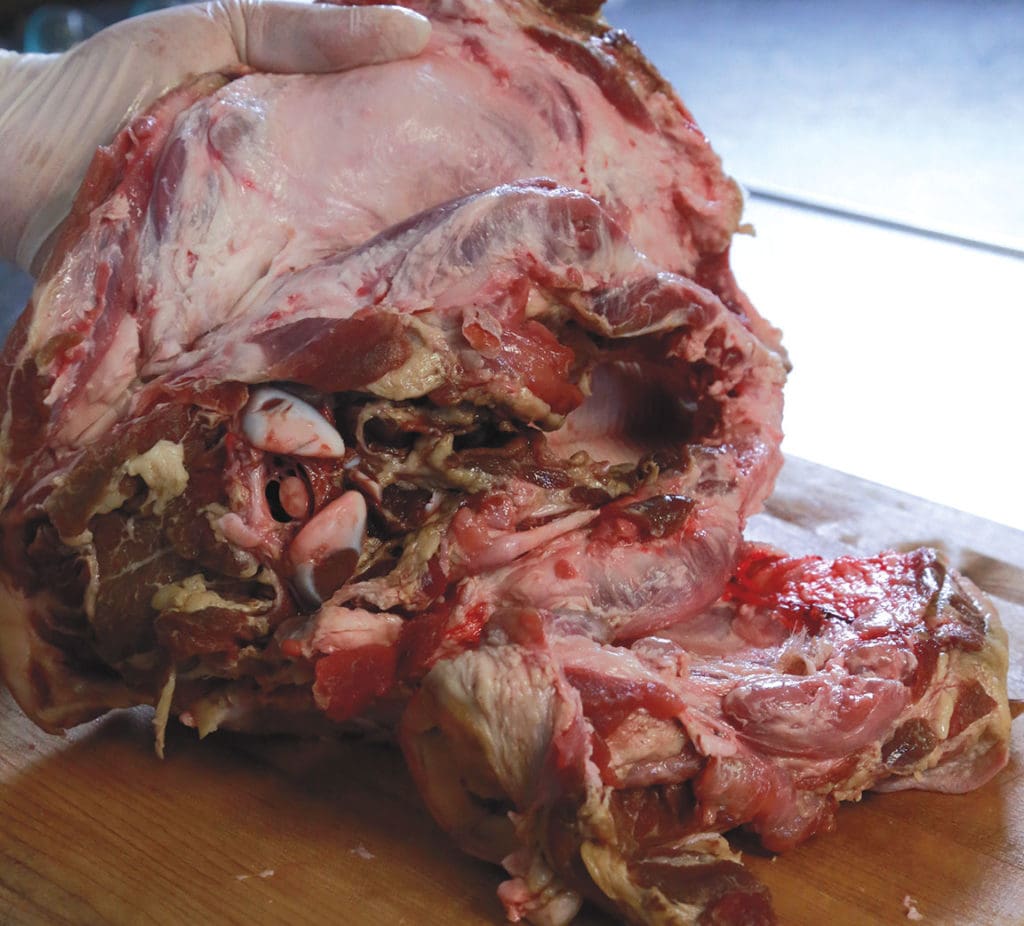
4
Keep pulling with firm pressure and making incisions as you round the cheekbone, then cut to the top of the head. Repeat the process on the right side.
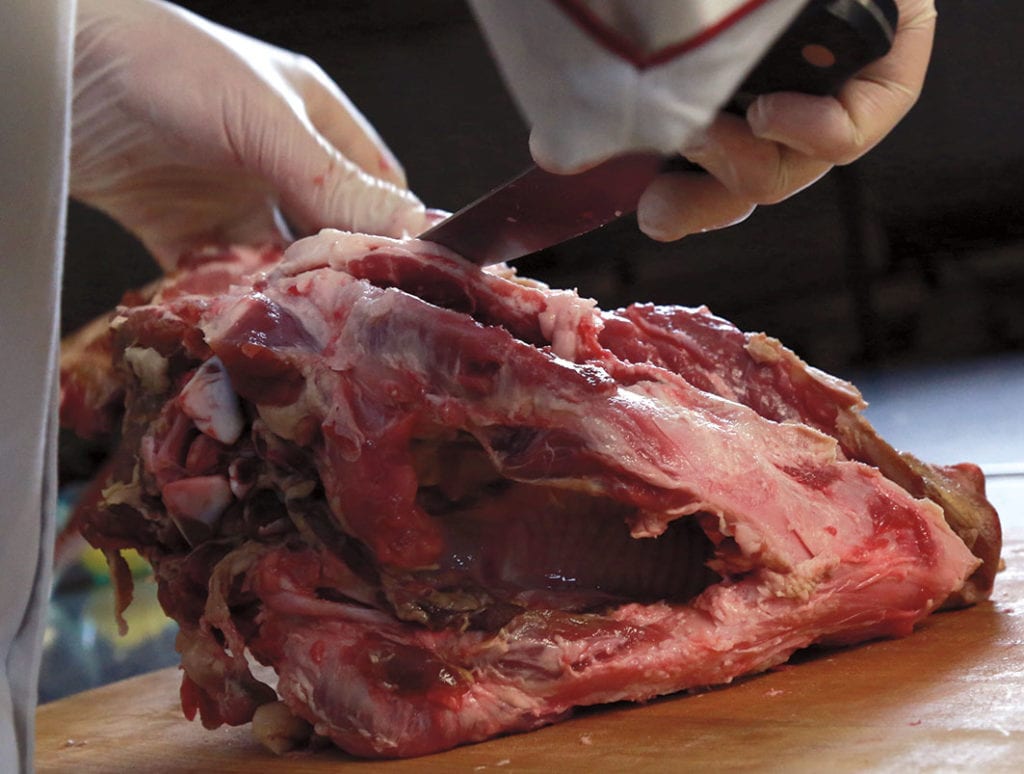
5
Lift up the skull and continue to remove the skin from the bridge of the nose.
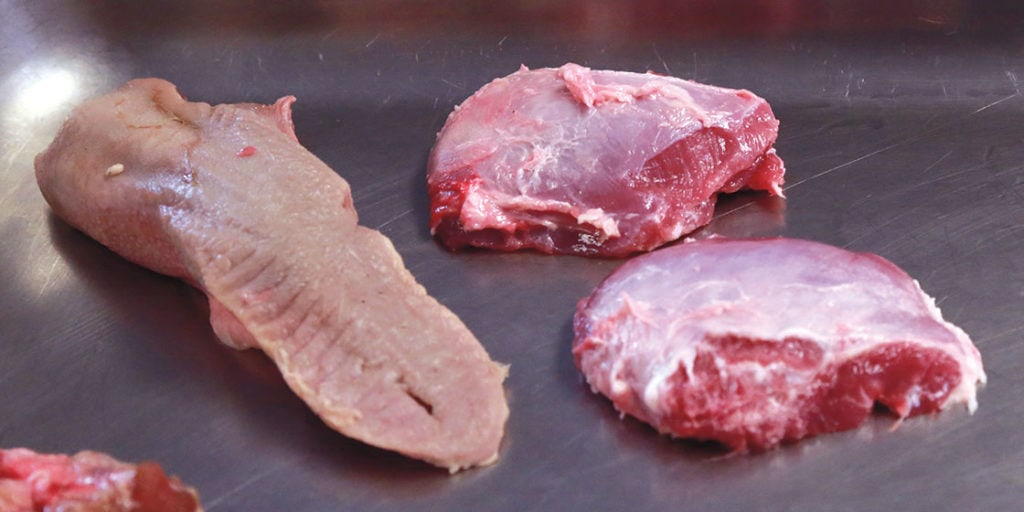
6
Free the base of the tongue from the skull and remove the tongue entirely. Also reserve the cheek meat.

7
Reserve the skull for later use. You can cover it with water, add some dried sage and thyme as well as some chopped celery, carrots and onions and simmer over low heat for an hour or so; or you can season it with salt and pepper and roast it in a 350-degree oven.; maybe you can make some tacos while you wait for the porchetta to marinate.

8
Clean up and remove small sinew and pieces of cartilage.

9
Sprinkle one tablespoon of curing salt on both sides of the head and tongue.
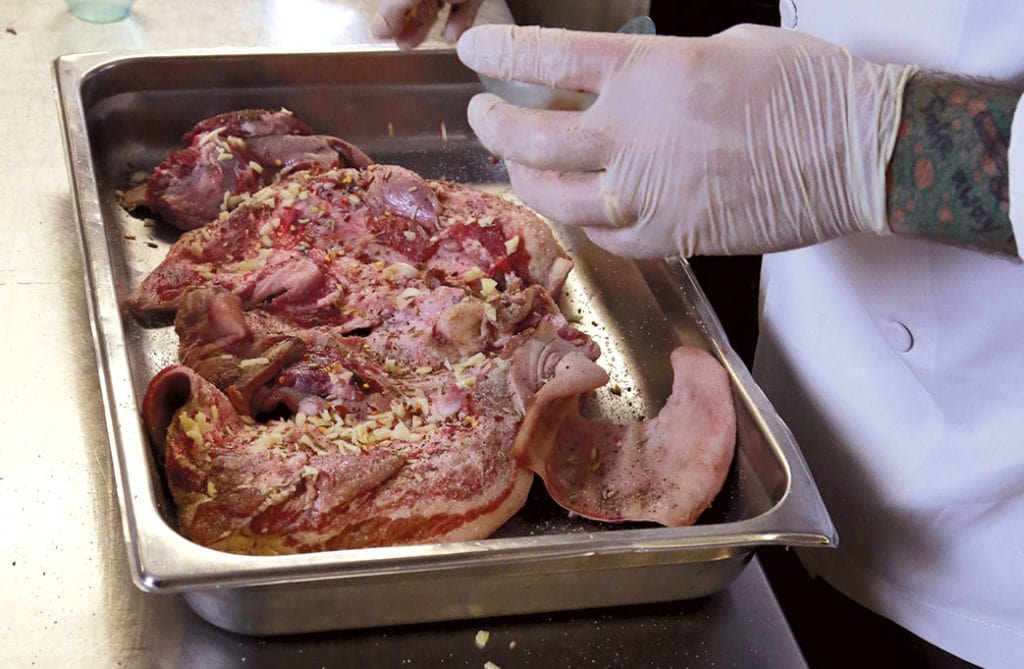
10
Place skin-side-down in a shallow pan and season with kosher salt, pepper, rosemary, garlic, lemon zest, fennel seeds and chile flakes.

11
After 48 hours, place the tongue in the center of the head and the cheeks on either side of the tongue. Fold in both ears and roll the left side into the middle and then fold the right side over the rolled left side. It should look like a pig’s head that has been rolled back together. Tie 7-9 times with butcher twine and vacuum seal with a cryovac machine. Cook the pig’s head sous vide at 185 degrees Fahrenheit (85 degrees Celsius) for 16 hours.
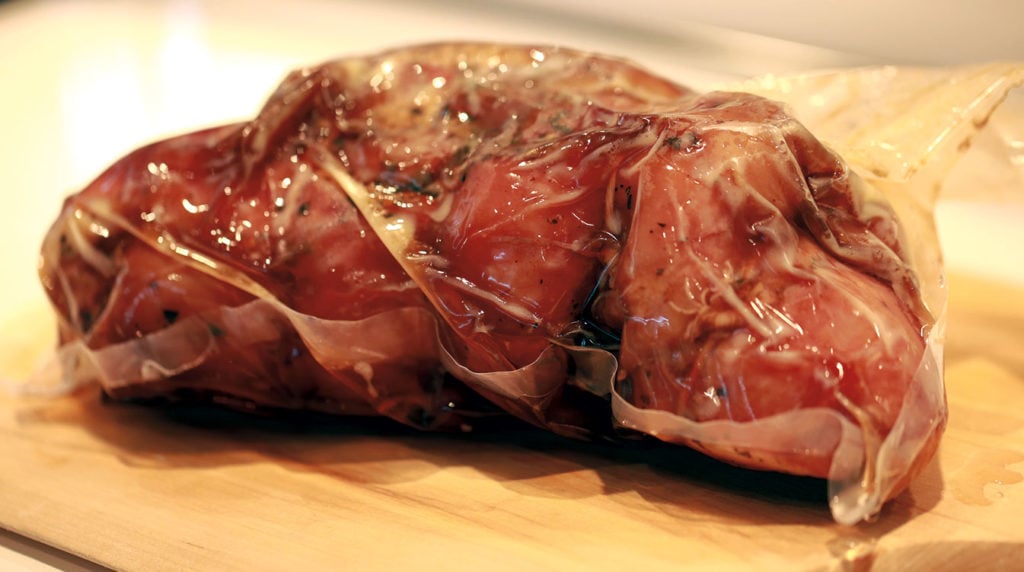
12
After 16 hours, place the porchetta, in the plastic bag, in an ice water bath and chill until the internal temperature is 40 degrees. Keep adding ice as it melts. Remove from the ice bath and refrigerate, keeping the porchetta in the plastic bag.
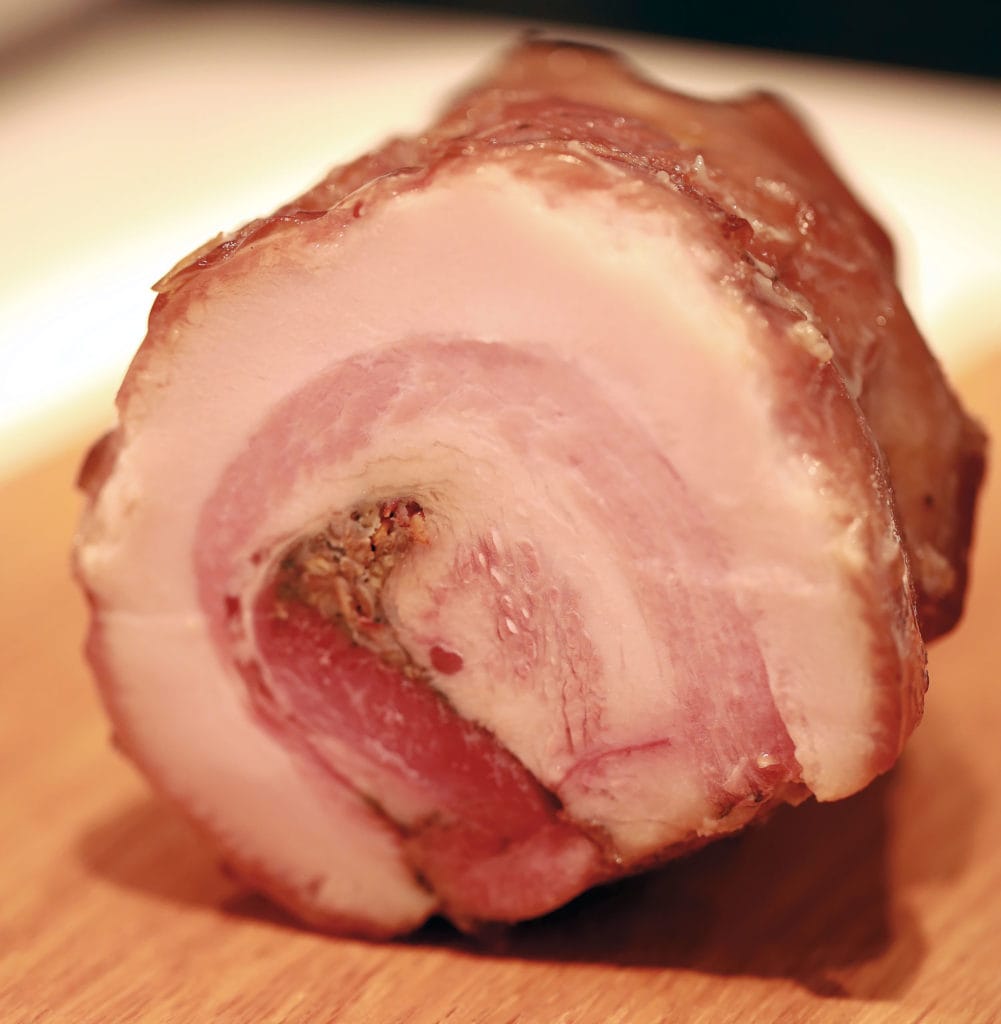
13
Hold in the refrigerator for 48 hours to let the flavors develop. When ready to serve, remove from the bag and cut the strings from the outside. The meat will have a natural ring of pork fat and gelatin surrounding it. Use either a deli-style slicer or a sharp knife to slice the porchetta as thinly as possible to serve.
Copyright © 2015 by Amy and Craig Nickoloff and West Coast Prime Meats
Recipes reprinted with permission of the owners.
Contributor

USC Hospitality
Chef’s Note
We offer two ideas for your porchetta. In either case, slice the porchetta as thinly as possible:

To make a bruschetta, slice a slim baguette loaf crosswise into 1/2-inch slices. Place the slices on a baking tray, brush them with clarified butter or olive oil and toast them in a 350 degree Fahrenheit oven until golden brown, about 7-10 minutes. Remove from the oven and allow to cool. While the bread cools, shave a two-ounce piece of Parmesan cheese with a Swiss vegetable peeler. Fold or cut a piece of porchetta to fit on top of the toast slice, top with a leaf of baby arugula and a shaving or two or Parmesan; repeat with each piece of toast.
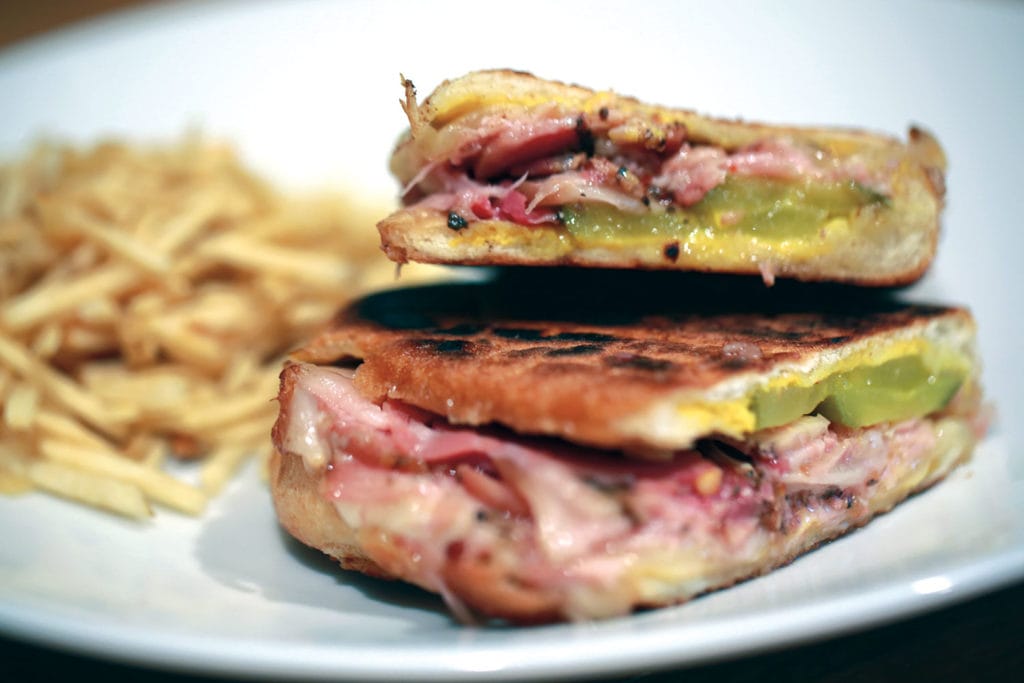
To make a Cubano-style sandwich, find a bread roll that has a firm but not hard crust and a soft interior. If you have a panini machine, plug it in. If not, start heating a cast iron pan on the stove over medium heat; have at hand a sandwich weight or a brick wrapped in foil (or similar flat, heavy item wrapped in foil). Cut the roll in half, remove some of the soft, white bread inside and spread the inside of both halves with yellow mustard. On the bottom half, place a long slice of dill pickle on top of the mustard, then a few slices of porchetta and a slice of swiss cheese. Put the top of the roll back in place. Brush the top and bottom of the roll with butter and set either in the panini machine or in the cast iron pan. If using the pan, place the heavy weight on top to press the sandwich. When the bottom half is nicely browned, turn the sandwich over, weight it again and continue to cook until both halves are nicely browned and the cheese has melted, about two to three minutes.


